


SAŠA SPAČAL MIRJAN ŠVAGELJ ANIL PODGORNIK
50Myconnect
Myconnect “offers the experience of a symbiosis of connection between humans, nature and technology. The spectator becomes an actor by lying in a capsule, equipped with a helmet and body sensors measuring the variations in his rhythm This data is modulated and transmitted to a closed universe of mycelium culture (white mushroom) to produce alterations using electrical resistance. These variations in turn generate signals, sent back to the person in the form of vibration, sound and light. Each cycle can be different depending on whether the experience is stimulating or calming. This type of perceptual exchange enabled by technology reveals how much the human being is an integral part of the complex network that links him to his environment.
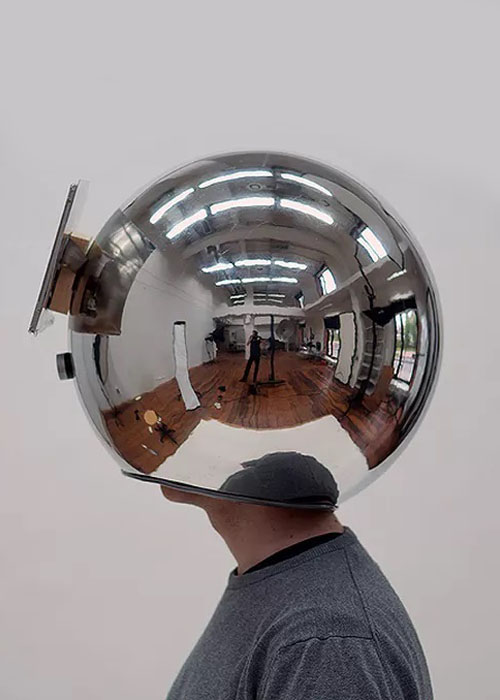
LORENZ POTTHAST
The Decelerator Helmet
The technique of the Decelerator extends the awareness of time and transforms the concept of present in a constructed, artificial state. On a different Level the helmet dramatically visualizes how slowing down under all circumstances causes a loss of actuality and as idea is inconsistent with it´s Environment. Technical enhancement as a tool to give us control about our perception, asks the question how far this influence can go, before we are all lost in how we want to see reality. The Decelerator unintentionally explores how aspects of this shift to a personalized perception could change our view of the world.

Ief Spincemaille
Reverse Blinking
Imagine that your head is captured inside a photo camera. It is completely dark. Only when the shutter opens en closes, you see the world in a flash. The shutter moves so fast that nothing has time to move. Everything where you point your gaze at, becomes like a photograph. A memory. Something that has been, but isn’t anymore. You see people as frozen figures, whole streets as untouched moments. Life as a sort of dia show. “Reverse Blinking” creates this experience. It is a completely closed helmet with two shutters in front of the eyes. They are controllable by the user. Reverse Blinking works on batteries and can be freely used in or outside the museum. It is best used where there is a lot of movement and people. “Reverse Blinking” is part of a series of art works, through which the artist tries to add video and photographical effects to our natural way of seeing.

Jacob Taekker
Apophenia Cloud Travel Apparatus
“…a visitor must first gear up in a simple uniform of gray booties, lab coat and adjust a safety-helmet-type harness to their head. This harness supports a grey rectangle of plastic positioned directly in front of one’s face, leaving only the periphery vision for navigation. My first assumption was that this blockage was somehow supposed to simulate an unusual visual disability. However, upon entering the designated darkened room, my ‘screen,’ caught the projection of a giant eye, which filled my vision like some early surrealist film.” Sarrita Hunn

Behnaz Farahi
Synapse
Synapse is a 3D-printed helmet which moves and illuminates according to brain activity[…] The main intention of this project is to explore the possibilities of multi-material 3D printing in order to produce a shape-changing structure around the body as a second skin. Additionally, the project seeks to explore direct control of the movement with neural commands from the brain so that we can effectively control the environment around us through our thoughts. The environment therefore becomes an extension of our bodies. This project aims to play with the intimacy of our bodies and the environment to the point that the distinction between them becomes blurred, as both have ‘become’ a single entity. The helmet motion is controlled by the Eletroencephalography (EEG) of the brain. A Neurosky’s EEG chip and Mindflex headset have been modified and redesigned in order to create a seamless blend between technology and design.

Peng Di
dementia simulator
This Dementia Simulator headset designed by Central Saint Martins graduate Di Peng lets wearers experience symptoms of the disease for themselves (+ movie). The helmet affects each of the senses, in an attempt to replicate many of the challenges faced by dementia sufferers. The translucent, egg-shaped device sits over the wearer’s entire head, and includes a mouthpiece, earpiece and screen that covers the eyes.

Anouk Wipprecht
Faraday dress
While the odds of you getting hit by lightning is approximately one to one octillion, Dutch designer Anouk Wipprecht and music performance group Arcattack have created a wearable a metal dress that discharges one million volts of electricity. Part futuristic, part anime-meets-high fashion, the dress comprises metal plates, 600 rings of chain mail, 3D ‘plasma ball’ mounts on the shoulders and a spiked helmet with a grille on the front.

ALICE HALDENWANG, LAURA COUTO ROSADO AND TINGTING ZHANG
Telepathy 2012-2112
“TELEPATHY” immerses the viewer in the heart of a fiction where telepathy would become the predominant means of communication at the expense of means of current communication. The ten glass helmets enable to visualize a telepathic communication, by definition invisible. “TELEPATHY” proposes to reverse the current trend which consists in basing its communication on technology, and in exchange it reveals the parapsychological and subjective communication of psychic phenomena.

JULIUS VON BISMARCK
top shot helmet
The Top Shot Helmet alters one’s spatial perception. Wearers see themselves from above and must guide their movements and orient themselves from this perspective. The device consists of a round helmet, above which floats a helium balloon attached to the helmet with strings. The balloon carries a small video camera operated by radio signal, which points downward with a wide-angle lens. The view captured by the camera is projected onto a pair of video glasses in the helmet. Wearers of the helmet can only see the image produced by these glasses and must use this to make their way through a given space. By moving the head, the person wearing the helmet can turn and tilt the balloon and camera. A handle on the helmet makes it possible to adjust the height of the balloon and thereby adjust one’s field of vision.
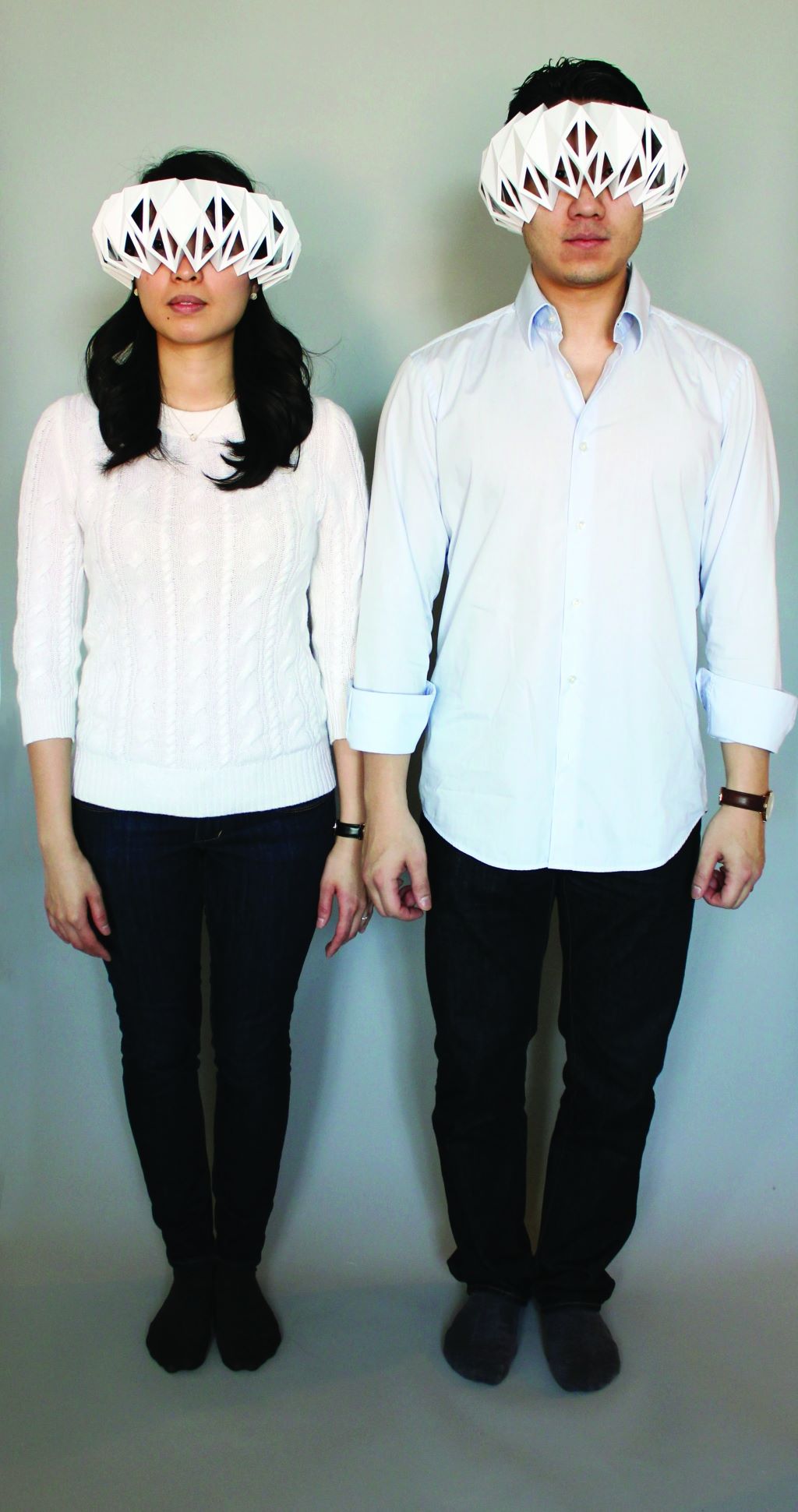
Christine Kim and Marcin Kedzior
Paper Orbs
Paper Orbs begins the night as a massive origami sculpture which dissolves into thousands of paper helmets worn by visitors as they parade down University Avenue. As both a lantern and a center of gravity, the paper float pulls visitors in and encourages them to return throughout the night to experience the dissolution of the paper sculpture. The accumulated paper helmets disperse into scattered constellations that float along the street. The helmets also resonate with notions of patterned order and militaristic armour.

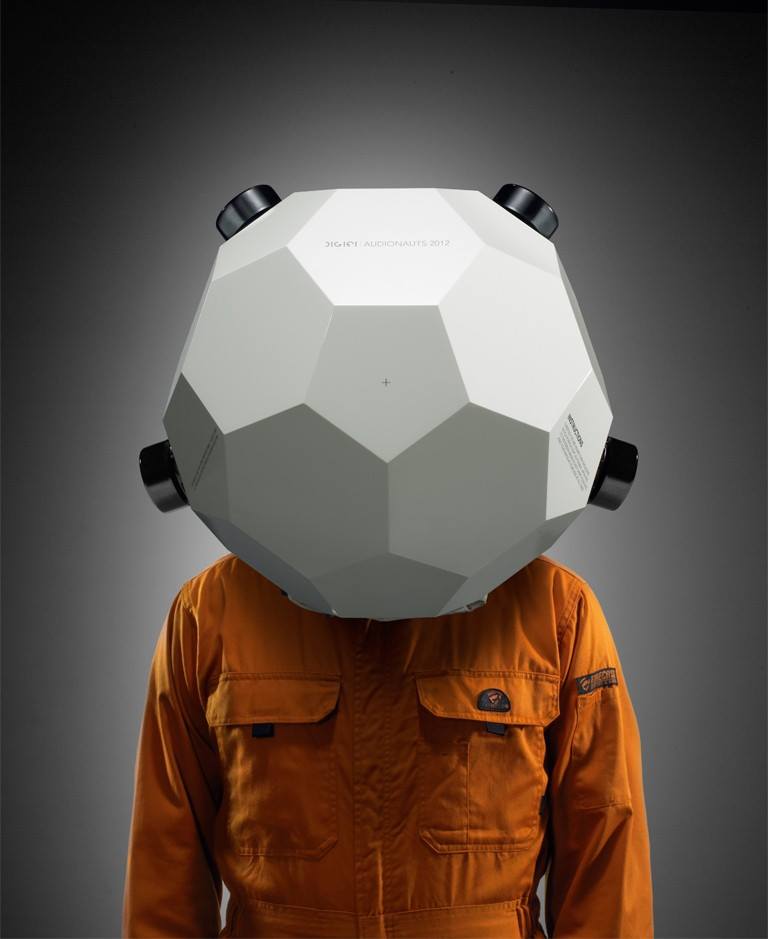
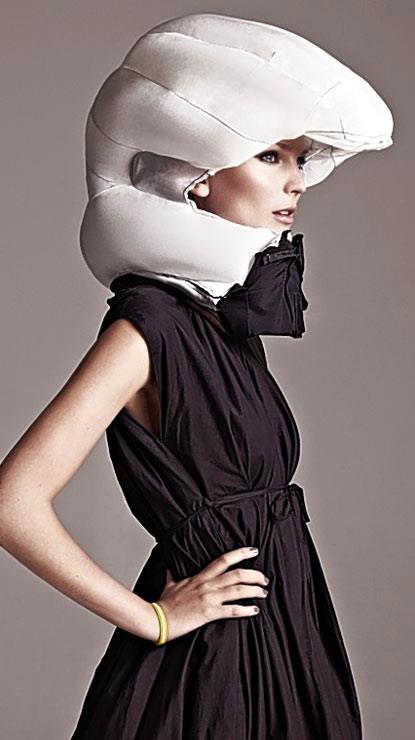

JAMES AUGER AND JIMMY LOIZEAU
Interstitial Space Helmet
Der Interstitial Space Helmet (ISH) ist ein Erfahrungskommentar zur zeitgenössischen Kommunikation, wie sie durch Technologie vermittelt wird. Die ISH befasst sich mit dem Aufstieg der digitalen Vermittlung menschlicher Repräsentation und wie dies normative Vorstellungen von Bild, Persönlichkeit und Kommunikation in Frage stellt. Während sie vor dem Bildschirm platziert werden und über Webkameras und künstliche Personas mit anderen interagieren, könnte der moderne Computerbenutzer auf sie stoßen Probleme im Umgang mit realen Menschen in physischen Interaktionen. Das Konzept verwischt diese beiden Welten und nimmt Elemente des Virtuellen in das Physische auf. Als Produkt für die Otaku-Generation erkennt es die Tatsache an, dass das Internet neue Formen der sozialen Interaktion geschaffen hat, die neue Verhaltensweisen ermöglichen. Beispiele hierfür sind Online-Chatrooms, Spiele und virtuelle Welten wie Second Life, in denen wir derjenige sein können, für den wir uns entscheiden. Normative Verhaltensweisen und Regeln existieren nicht und für einige sind diese Orte komfortabler als die physische Welt. Der Interstitial Space Helmet besteht aus zwei vakuumgeformten Standardhälften von A.B.S. Diese werden individuell mit einer akustischen Innenpolsterung an den Benutzer angepasst, um eine bequeme und schalldichte Passform zu gewährleisten. Das ISH in der Standardform verfügt über einen A / V-Ausgang, einen internen LCD-Bildschirm in einem Abstand von 17,5 cm vom Auge und ein internes Mikrofon.

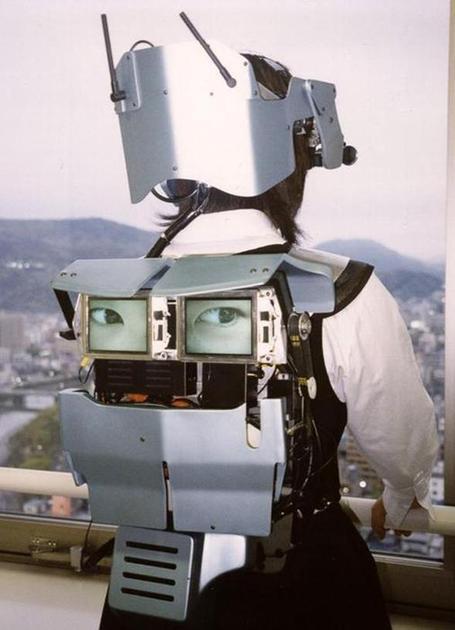
KRZYSZTOF WODICZKO
Dis-Armor Project
Dis-Armor is the newest in a series of psychocultural prosthetic equipment designed to meet the communicative need of the alienated, traumatized, and silenced residents of today’s cities. It connects contemporary research in two fields: wearable communi- cation technology and prosthetics. In doing so, it counters the dichotomy of the present explosion in communication technology and rampant cultural miscommunication. Dis-Armor offers an opportunity for indirect, mediated communication by allowing its users to speak through their backs. LCD screens, worn on the back, display live images of the wearer’s eyes transmitted from cameras installed in the helmet covering the face. A speaker positioned below the LCD screens amplifies the user’s voice. Attached to the helmet is a rearview mirror, alternatively, a rearview video camera, monitor, microphone, and headphone. These permit the user to see the face and hear the words of the spectator/interlocutor standing behind. Wireless video equipment installed in the helmet further allows two users to work in tandem, showing each other the other’s eyes and broadcasting to each the other’s voice.



MELANIE FITZMAURICE
Hemisphere Helmet